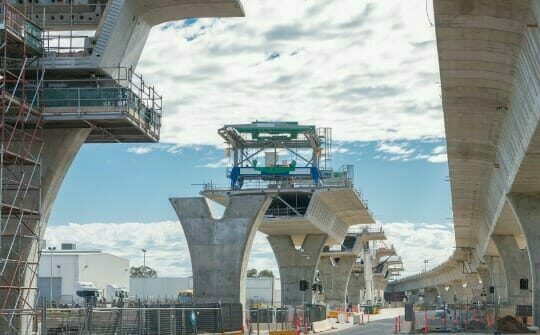On Friday, the House passed a Senate-approved $1.2 trillion bipartisan infrastructure bill, allocating more than $550 billion to bolster America’s roads and bridges, broadband, water, and energy systems over five years. Many hailed the passage of the bill as sorely needed, as America’s infrastructure has not seen this level of investment in several decades. The second part of President Biden’s “Build Back Better” agenda – the $1.75 trillion social spending package – is still under negotiation. The current version provides $165 million for mental health and substance use disorder (SUD) services, including:
- $75 million for the National Suicide Prevention Lifeline
- $50 million for the Minority Fellowship Program at the Substance Abuse and Mental Health Services Administration (SAMHSA)
- $25 million for SAMHSA’s Recovery Community Services Program Statewide Network program
- $15 million for Project Aware
- $5 million for the National Child Traumatic Stress Network
While there is still much to be finalized in the spending package, one thing is clear: America’s addiction and mental health infrastructure must be as much a priority as our roads and bridges.
Earlier this year, Congress took its first steps in addressing the historic under-funding of America’s behavioral health system by passing the American Rescue Plan Act of 2021 (ARPA). The legislation included several key behavioral health funding provisions:
- $3 billion for the Substance Abuse Prevention and Treatment block grant and the Community Mental Health Services block grant ($1.5 billion each)
- $420 million to SAMHSA to fund Certified Community Behavioral Health Clinics Expansion Grants
- $8.5 billion in new money to the Provider Relief Fund for providers in rural areas and those serving rural communities
- More than $450 million in additional funding for Substance Abuse and Mental Health Services Administration (SAMHSA) and Health Resources and Services Administration (HRSA) programming, including funding for mental health and addiction services, workforce education and training, suicide prevention, and public education campaigns
In addition, the bill provides $350 billion in emergency funding for state, local, territorial, and Tribal governments. The Treasury Department specifically called out behavioral health (mental health and SUD) treatment as one way these funds can be spent; once again, underscoring a recognition of the importance of our system.
Want more daily health intelligence from Third Horizon Strategies? Sign up for Tea Leaves – a free daily newsletter capturing a rundown of the most important health industry activity!
With passage of ARPA in early spring and the potential inclusion of significant increases in the $1.75 trillion social spending package, we are beginning to see a new day in addiction and mental health funding priorities. Our challenge now is to spend these new dollars not only on one-time investments, but on innovative and evidence-based solutions that expand prevention and treatment and sustains recovery. To do this, we will need multi-pronged approaches that address the significant workforce shortages, expand access to treatment nationwide, promote integration with primary care to address co-occurring physical health needs, enhance school-based prevention opportunities, and significantly change payment methodologies to incentivize long-term recovery.
If we are to build a more pro-active and responsive health care system that pays for health and wellness, rather than sickness, then it is incumbent on states and localities to also focus heavily on social determinants of health. By supporting our social needs that are key drivers of health outcomes, we can impact what Congress’ Bipartisan Addiction and Mental Health Task Force calls the “dual addiction and mental health public health crises that have been exacerbated by the COVID-19 pandemic”.
Finally, this cannot be one-time spending by our federal government. Wide-spread systemic underfunding of addiction and mental health services has occurred for decades, eroding our system and reducing capacity. An infusion of dollars is most welcome and needed across the country, but no single-shot approach will address years of neglect. As we reflect on the passage of a trillion-dollar infrastructure bill, let us recall we needed such funding because of long-term neglect. We cannot afford to wait decades for a trillion-dollar investment – our treatment gap is already too large and too many are suffering. The opportunities ahead are vast, and the time is now to make a difference that can positively impact our nation for years to come.

